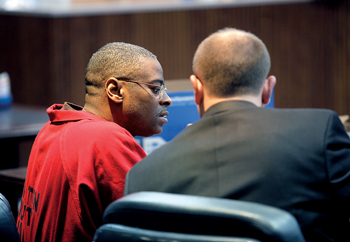Chattanooga: Kendrick hearing looks at gun residue tests
Friday, February 11, 2011
Attorneys for Edward T. Kendrick III, seeking a new trial on his 1994 murder conviction, on Friday questioned a forensic expert on testing to see whether or not someone had fired a gun.
Tennessee Bureau of Investigation forensic Russ Davis answered questions in Hamilton County Criminal Court from defense attorney Jeffrey Schaarschmidt.
Kendrick was convicted of shooting his wife, Lisa Kendrick, in the chest with a Remington 7400 .30-06 rifle.
Kendrick has maintained that the weapon "went off" and he did not intend to kill his wife. His hearings this week are to challenge previous rulings on his multiple appeals.
Schaarschmidt asked Davis to explain how TBI forensics investigators determine if someone has fired a weapon. They also asked him about his examination of a swab kit sent from Chattanooga police to the Nashville crime lab shortly after the March 6, 1994, shooting.
Davis explained that a swab kit is used to test for the presence of chemicals associated with firing a weapon. He said the kit is examined for metals present in a cartridge primer and then the examiner writes a report with one of three determinations - absent, inconclusive or present.
The result for Kendrick's test kit was inconclusive.
But the forensic scientist clarified that just because an absent or inconclusive report is made does not mean someone didn't fire a gun.

